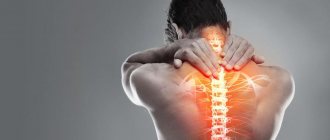Panic personality disorder (BPD) in psychiatry is also called episodic paroxysmal anxiety (anxiety). This is a common disease that occurs in all age groups. The main manifestation is panic attacks (PA), which appear with varying frequency and intensity.
People of different ages come to the Moscow clinic “Leto” with this problem. They experience excruciating panic attacks that significantly impair their quality of life. Therefore, assistance should be provided the sooner, the better.
Before the revision of the ICD-10 classification, BPD was classified in the group of cardioneuroses, VSD (vegetative-vascular dystonia) with crises, and NCD (neurocirculatory dystonia). Now it is separated into a separate nosological unit.
Causes
In cases where psychiatrists at our clinic identify mental disorders accompanied by fears and anxiety, they try to find the main factor provoking the condition. Then the task of relieving the client of his illness becomes much simpler.
Most often, the development of the process is provoked by:
- The presence of similar suffering in relatives (heredity factor).
- Childhood and adolescent psychotrauma.
- Increased level of sensitivity and conflict in the individual.
- Features (accentuations) of the patient’s character and temperament. High background anxiety, suspiciousness, excessive impressionability, vulnerability, frequent impulsive reactions, shyness.
- Staying under stress for a long time.
- Falling under the influence of super-strong emotions, both negative and positive.
- Diagnosis of a serious illness.
- Physical limitations due to disability.
- Hormonal disorders (diabetes mellitus, thyroid pathologies, etc.)
- Neuroses and phobias.
Panic states are frequent companions of people with an unbalanced diet, suffering from chronic fatigue, lack of sleep and use of psychoactive substances.
Causes of the occurrence and development of the disease
Experts believe that the following factors contribute to the onset of the disease:
- the presence of persistent circulatory disorders, hormonal imbalances or chronic heart diseases;
- chronic form of dependence on alcohol, drugs, psychoactive substances, as well as abrupt cessation of their use;
- traumatic brain injuries and their consequences;
- being in a situation of prolonged stress;
- character traits - melancholic temperament, anxious accents in character;
- tendency to exaggerate dangers due to their high susceptibility;
- neurotic and mental disorders: depression, neurasthenia, hysteria, schizophrenia, paranoia, various manias;
- mental trauma in children at an early age and in adults in extreme situations - war, earthquake, being in a state close to death, loss of a loved one or their support, and others.
Psychologists view the process of anxiety in different ways:
- adherents of psychoanalysis believe that the reason is the regular suppression of one’s own desires;
- the latter believe that the reason is a breakdown in the connection between the stimulus and the mental response to the stimulus;
- still others believe that the reason is the reaction of the psyche to distorted mental images of a person.
Signs and symptoms
During the examination of patients, doctors at the Leto mental health center identify multiple complaints characteristic of paroxysmal anxiety. Symptoms are replete with variety.
Almost constantly, suffering people experience:
- Obsessive anxiety for no reason.
- Lack of ability to relax and get rid of anxious thoughts.
- Poor sleep with difficulty falling asleep, frequent awakenings, lack of feeling of rest.
- Psychophysical inhibition.
- Emotional swings with poor self-control.
- Falling into detachment, accompanied by negative thoughts.
Mental symptoms are supplemented by autonomic disorders:
- Uncomfortable feeling of a lump in the throat and squeezing in the chest area.
- Cardiac arrhythmias - increased heart rate, less often slower.
- Excessive sweating, alternating chills and fever.
- Constant weakness with desire to lie down.
- Dizziness, accompanied by nausea at rest and during exercise.
Psychopathology reaches its greatest severity and severity during a panic attack.
The attack is accompanied by:
- Peak of emotional stress.
- Strong uncontrollable fear, both pointless and related to a specific problem: fear of death, the occurrence of some extremely negative event, for example, a plane crash.
- Suicidal thoughts and even actions.
- Trembling throughout the body, heavy sweating, severe tachycardia, loss of orientation and even loss of consciousness.
Panic can begin both during the daytime and during sleep. The average duration of PA is within 10 minutes. In some cases, attacks last from 1 to 2 minutes to half an hour. It is not uncommon to experience a series of phobic episodes. After the first paroxysm of fear with a short period of calm, the second, third, etc. occur. Acute manifestations of BPD can occur: daily, once every 2-3 days, weekly.
During the paroxysmal period, the patient tends to isolate himself, may not go outside, and stop visiting his place of study and work.
The level of desocialization in this case is set in time
The purpose of examining the patient using special techniques.
The largest number of people suffering from episodic parkosysmal anxiety are young. In children and adults, the problem is less common. Panic attacks are predominantly characteristic of women (about 2-3 times more often). This pathology is detected in 1.7% of the population. The disease has a wavy course. In some people it goes away on its own, in others the process progresses and requires ongoing treatment.
Panic disorder - principles of therapy
The main manifestation of PR is repeated paroxysms of anxiety (panic attacks). A panic attack (PA) is an inexplicable, painful attack of fear or anxiety for the patient in combination with various vegetative (somatic) symptoms. In the domestic literature, the term autonomic crisis has been used for a long time, reflecting ideas about the primacy of dysfunction of the autonomic nervous system. It is acceptable to use both terms, although the term “panic attack” has worldwide recognition and is included in the International Classification of Diseases, 10th revision [2]. Diagnosis of a panic attack is based on certain clinical criteria. A panic attack is characterized by paroxysmal fear (often accompanied by a feeling of impending doom) or anxiety and/or a feeling of internal tension in combination with 4 or more of the list of panic-associated symptoms (Table 1). The intensity of the main criterion of PA - paroxysmal anxiety - can vary widely (from a pronounced affect of panic to a feeling of internal tension). In the latter case, when the vegetative component comes to the fore, they talk about “non-insurance” PA or “panic without panic”. Attacks depleted of emotional manifestations are more common in therapeutic and neurological practice. The criterion of the presence of at least 4 symptoms from the list in an attack is not absolutely strict. As a rule, patients, along with “full-scale” attacks, experience more frequent “minor” attacks, limited to 2-3 symptoms. In addition to the symptoms presented in the list, the attack may include other symptoms, most often the so-called conversion ones (sensation of a lump in the throat; gait disturbance; visual or hearing impairment; cramps in the arms or legs, pseudoparesis, etc.). But the presence of more than 5-6 atypical (non-panic-associated) symptoms during an attack casts doubt on the diagnosis of PA. Panic-associated symptoms develop suddenly and reach their peak within 10 minutes. The post-attack period is characterized by general weakness and weakness. The duration of the attack is also an important diagnostic criterion. The short duration of the paroxysm argues against the diagnosis of PA. The duration of PA is calculated in minutes, on average 15–30 minutes. Although some patients report longer attacks. There is a direct relationship between the presence of an atypical radical in an attack and its duration. Assessing attack triggers can also help with diagnosis. Most patients report spontaneous (unprovoked) attacks. However, active questioning of the patient makes it possible to identify, along with spontaneous attacks, situational attacks that occur in potentially “threatened” situations. Such situations may be using transport, being in a crowd or confined space, the need to leave your own home, etc. Stress factors are also considered as important provocateurs of PA. Classic biological provocateurs of PA are infusion of sodium lactate, inhalation of 5–35% CO2, and hyperventilation. In addition, PA can be triggered by alcohol intake, insufficient sleep, and menstruation. Very rarely, panic occurs in response to unexpected stimuli of various modalities (a knock on the door, a phone ringing, an unexpected touch, etc.), which is interpreted by some researchers as a kind of startle reaction. PAs occur predominantly during wakefulness (during the daytime or evening). However, in some patients, in addition to daytime attacks, there are also nighttime attacks that arise from sleep. It is extremely rare for patients to have only sleep PA. Based on polysomnographic studies, it has been established that sleep PAs occur during the slow phase of sleep, usually in late 2nd or early 3rd stages of sleep. The frequency of attacks varies widely within the patient population. Attacks can be observed as isolated phenomena, and at the same time, in some patients they occur several times a day. Moreover, in the case of daily deployed attacks, as a rule, there are 3–5 small attacks per deployed PA. Panic attacks are not a nosologically specific phenomenon. A one-time occurrence of PA cannot be considered from the perspective of a disease at all. It is believed that most people, under certain circumstances, experience this dramatic phenomenon at least once in their lives. In this case, PA represents a physiological response to emotional stress. PA can occur in somatic as well as mental illnesses, especially depressive disorders. But most often doctors encounter the phenomenon of PA within the framework of panic disorder. The ICD-10 diagnostic criteria [2] for panic disorder contain the following points: 1. Recurrence of panic attacks. 2. Panic attacks for a month or more are accompanied by symptoms such as: – constant concern about the recurrence of attacks; – concern about complications of attacks or their consequences (loss of self-control, severe organ pathology); – significant changes in behavior associated with attacks. 3. The occurrence of attacks is not caused by the direct action of any substances or somatic diseases (arrhythmia, thyrotoxicosis, hypertensive crisis, coronary heart disease, etc.). PR has a special stereotype of the formation and development of symptoms. The first attacks leave an indelible mark on the patient’s memory, which leads to the appearance of an anxiety syndrome of “anticipation” of an attack, which, in turn, perpetuates the repetition of attacks. Repeating attacks in similar situations (in transport, being in a crowd, etc.) contributes to the formation of restrictive behavior, i.e. avoiding places and situations that are potentially dangerous for the development of PA. Anxiety about the possible development of an attack in a certain place (situation) and avoidance of this place (situation) is defined as agoraphobia (from the Greek agora - area, phobia - fear). The increase in agoraphobic symptoms leads to social maladjustment of the patient. Due to fear, patients are unable to leave home or remain alone. The presence of agoraphobia in PD indicates a more severe course of the disease, a worse prognosis and requires special therapeutic tactics. Apparently, the stereotype of the development of panic disorder, discussed above, is not universal and, obviously, there are several options that differ from each other in the dynamics of the appearance of symptoms of PA, anticipatory anxiety and agoraphobia. As PD progresses, the disease may be complicated by the appearance of symptoms of depression. Many researchers have proven that when PD and depression are combined, both disorders manifest themselves in a more severe form. In general, PR is characterized by a high frequency of comorbid conditions (Table 2), which generally aggravate the prognosis and reduce the likelihood of remission. The comorbidity of PD with psychopathological syndromes tends to increase with the duration of the disease. Insomnia to one degree or another is characteristic of the vast majority of patients with PR. A special study we conducted showed that in patients with PR, all subjective characteristics of sleep were changed in a pathological direction: overall quality of sleep, speed of falling asleep, depth of sleep, sleep duration, and others [3]. Very often, sleep disturbances precede the onset of PA. This is especially true for patients with nocturnal PA. The sleep of patients with PD is characterized by a number of signs of increased activity of nonspecific activating influences (extension of time to fall asleep, decrease in total sleep duration, decrease in delta sleep content, decrease in the production of sleep spindles and delta waves). Finally, inadequate and untimely treatment measures contribute to the chronicity of PR. Anxiety disorders, including panic, are diagnosed in only 50% of patients with obvious symptoms [4]. Less than 50% of patients receive any treatment and less than 30% receive adequate therapy. Despite the obligatory nature of autonomic dysfunction during an attack and the often masked nature of emotional disorders, the basic method of treating PD is psychopharmacological treatment. However, it would be incorrect to associate the severity and chronicity of ADR only with diagnostic and therapeutic errors, since ADR tends to become chronic even despite adequate treatment [5]. Nevertheless, it is extremely important to promptly and correctly diagnose PR and apply the most appropriate therapeutic tactics possible. When determining treatment tactics for patients, they primarily compare the benefits of treatment with the risks of it. Risk factors for pharmacotherapy include side effects, complications during therapy, and difficulties in discontinuing the drug. The benefits of treatment are the restoration of health, social functioning of the patient and the ability to prevent relapses. Selective serotonin reuptake inhibitors (SSRIs), tricyclic antidepressants (TCAs), and high-potency benzodiazepines (HBPs) such as alprazolam and clonazepam have been shown to have antipanic effects in many studies compared with placebo (Table 3). SSRIs are gradually replacing TCAs and benzodiazepines in the treatment of PR and are beginning to occupy a leading position. Currently, SSRIs are recognized by most researchers and practitioners as the first-line drugs of choice for the treatment of panic disorder. This provision is based on the undoubted antipanic effectiveness and good tolerability of drugs in this group. The undeniable advantage of SSRIs is their high effectiveness against agoraphobia, superior to classical TCAs. Of course, like any antidepressants, they affect depressive disorders. Often this category of patients has massive sleep disturbances. Among SSRIs, the leader in hypnogenic effect is fluvoxamine (Fevarin), due to its additional effect on sigma-1 receptors [6]. The effect of fluvoxamine on anxiety and insomnia develops rapidly during the first week, which brings significant relief to the patient. The benefits of this drug in patients with nocturnal panic attacks should be especially emphasized. Effects on sigma-1 receptors likely explain the potential benefits of fluvoxamine against hypochondriacal symptoms, also common in chronic panic disorder. In addition to the above, Fevarin has a pronounced analgesic effect, which, combined with its antidepressant effect, high safety and ease of administration (1 t./day - 100 mg), makes Fevarin the drug of choice for patients with anxiety and insomnia in combination with chronic pain syndromes ( in particular with chronic daily headaches). Benzodiazepine drugs are highly effective against PA itself. High-potency benzodiazepines can both stop an attack and control the progression of an attack. Moreover, the effect of VPB does not depend on the type of attack (typical, atypical, respiratory). Also, VPBs are able to block PA caused by physiological agents (lactate, carbon dioxide inhalation, cholecystokinin) both in patients with PR and in healthy people. These data support the hypothesis of the nonspecific participation of GABAergic systems in the development and control of panic and other paroxysmal states. In addition to controlling PA, benzodiazepines are also highly effective against anticipatory anxiety. However, these drugs are less effective in relieving agoraphobic disorders than SSRIs (Fevarin) and TCAs. The effect on depressive disorders in VPB is also less pronounced. The indisputable advantage of VPB is the rapid onset of effect. Control of PA on the ISP is achieved after a few days, while ADs show their effectiveness after several weeks. As a rule, by the end of the first week of treatment, the advisability of further taking the medication becomes clear. The absence of deterioration of the condition of VPB, characteristic of TCAs, at the initial stage of therapy is also one of the significant advantages of this class of drugs. The most significant problem in the use of VPB is the development of addiction and dependence, which makes long-term use of these drugs impossible. Treatment should only be started when the patient has recurrent attacks and anticipatory anxiety. In clinical practice, the severity of ADR is the most important criterion for choosing a therapeutic strategy. Before starting treatment, it is necessary to assess the frequency of PA, the degree of agoraphobia, the presence and severity of comorbid disorders (depression, anxiety, personality disorders), as well as previous treatment. When isolated PA appears, small, fixed doses of daily anxiolytics can be used, prescribed in short courses (no more than 3–4 weeks). “Mild” PR (relatively rare attacks not accompanied by persistent “avoidant” behavior) allows monotherapy with VPB. As the clinical picture becomes more complex and PR becomes chronic, the effectiveness of therapy with benzodiazepine derivatives decreases. “Extended” PR (more than 4 PAs, obvious anticipatory anxiety, agoraphobia that disrupts social adaptation; mild or moderate comorbid depressive disorder) requires monotherapy for several months (3–4). The choice of the class of the basic drug is determined by a set of the following factors: side effects, time of onset of the effect, the presence of concomitant syndromes (sleep disturbance, agoraphobia, depression, generalized anxiety), fear of developing withdrawal syndrome. Most clinicians adhere to the following standard of treatment for full-blown PR: • long-term prescription (several months) of a drug from the SSRI group Fevarin, unlike other antidepressants from the SSRI group, is distinguished by the onset of a rapid calming, anti-anxiety effect; • adding a benzodiazepine drug during the initial 2–4 weeks of treatment as an effective “bridge” until the desired effect of the SSRI is achieved [7]. Prescribing short courses of benzodiazepines to patients with PR is justified at the beginning of AD therapy - this helps to reduce the deterioration of the clinical picture that occurs in some patients during the initial period of AD therapy. In addition, while taking anxiolytics, the patient calms down, more easily agrees with the need to wait for the development of the antipanic effect of SSRIs, and better complies with the therapeutic regimen (compliance improves). In case of severe PR [high frequency of attacks (more than 10); severe agoraphobia leading to social maladjustment (job loss); comorbidity with major depressive disorder, alcohol and/or drug abuse, social phobia, generalized anxiety, personality disorder] pharmacotherapy should always be the first step, but with the further intention of using cognitive behavioral psychotherapy (the so-called sequential strategy). A combination of two drugs, VPB and SSRI/TCA, is mandatory at the initial stage. Prescribing psychotherapy simultaneously with medication at the initial stages of treatment may be useless, since a patient with frequent, widespread PA under the pressure of the severity of his condition cannot adequately participate in psychotherapeutic sessions. In the future, when an improvement in the clinical picture is achieved with drug therapy, the addition of cognitive therapy can greatly improve the overall outcome of treatment. The severity of the clinical picture requires long-term (a year or more) courses of treatment. Both pharmacological factors (inadequately short course of therapy, low doses of the basic drug, poor tolerability of the drug, noncompliance) and factors associated with the disease itself (presence of comorbid PR conditions, increased sensitivity) lead to the chronicization of PR and therapeutic resistance. ). Epidemiological studies show that about 40% of patients with PR do not take medications, although they have been consulted by a doctor and therapy is recommended. Only two thirds of patients receive treatment at adequate doses and duration. These facts confirm the need for active interaction between the doctor and the patient, clarification of the goals and strategy of therapy, as well as discussion of a favorable prognosis of the disease while observing the therapy regimen.
References 1. Perkonigg A, Wittshen HU. Epidemiologie von Angststorungen. // In: Kaster S, Muller HJ, eds. Angst– und Panikerkrankung. Jena: Gustav Fischer Verlag, 1995; 137–56 2. International classification of diseases (10th revision). Classification of mental and behavioral disorders. WHO/Translated from English. edited by Nuller Yu.L., Tsirkin S.Yu. Russia., S–P., "ADIS". 1994 3. Bashmakov M.Yu. Panic attacks in the sleep-wake cycle (clinical and psychophysiological study): dissertation. Ph.D. honey. Sciences, 1995, 132 p. 4. Sartorius N, Ustun TB, Lecrubier Y, Wittchen HU. Depression comorbid with anxiety: results from the WHO study on psychological disorders in primary health care. Br J Psychiatry 1996; 168: 38–43 5. Katschnig H, Stolk JM, Klerman GL, et al. Discontinuation and long–term follow–up of participants in a clinical drug trial for panic disorder. Biol Psychiatry 1992; 1:657–660 6. Stahl SM. Essential psychopharmacology: the prescriber's guide: antidepressants. Cambridge University Press 2006 7. Sheehan DV. The management of panic disorder. J Clin Psychiatry 2002;63 Suppl 14:17–21.
Diagnostics
Contacting our Leto clinic begins with a medical consultation. You can sign up for it by calling the hotline. Panic disorder is identified during a conversation and examination.
For this, a psychiatrist:
- Listens to complaints.
- Asks leading questions and clarifies the nature of the existing problems.
- Examines the patient, paying attention to his behavior and reactions.
- Measures blood pressure, conducts a physical examination with a phonendoscope, and establishes neurological status.
- Interviews loved ones if necessary.
After identifying a presumptive diagnosis, the process of confirming and clarifying it continues with a clinical psychologist.
His methods include:
- Testing using the Zang scale. Answers to the questions of this technique allow the specialist to identify the severity of the violation. The method is easy to carry out and the results obtained are reliable.
- Sheehan anxiety test. It makes it possible to establish the dominant symptoms when a panic attack occurs.
- Test version of Cato. The study includes a two-stage test: the first part to identify the disorder, the second to clarify the degree of severity.
The test results are transmitted to the attending physician and, based on the examination and psychological examination data, the healing process that has already begun is prescribed or adjusted.
Before starting therapy, the psychiatrist at our center makes sure that the complaints of the identified disorder are not caused by somatic or other mental illnesses.
Panic reactions can lead to:
- Of cardio-vascular system.
- Chronic pulmonary obstruction.
- Endocrine and metabolic metabolic disorders.
- Epilepsy.
- Bronchial asthma.
- Tumors of the central nervous system.
In this case, paroxysmal anxiety is a secondary problem, and the main therapeutic effect should be directed to the root cause.
Why does a panic attack occur and how long does it last?
The causes of panic attacks are not fully understood. They can develop against the background of certain diseases, such as vegetative-vascular dystonia or hormonal disorders in the body. The trigger for the first attack can be severe stress or emotional shock, as well as uncontrolled use of stimulants - caffeine, alcohol, medications.
Seizures can occur either spontaneously or in response to a specific situation. For example, when there are strong feelings due to a conflict, before a test or exam, before visiting the dentist. Panic attacks are possible after drinking alcohol or taking drugs, which serve as “activators” of the nervous system.
The duration of the attack cannot be predicted. It can last from several minutes to several hours, and occur at any frequency. Frequent attacks significantly reduce a person’s quality of life and require qualified assistance. It is a mistake to think that episodic anxiety is incurable or a sign of insanity. With timely help from a psychotherapist, it can be corrected. And the sooner help is provided, the faster and with fewer “losses” a person will get rid of the problem. Otherwise, deterioration of the psychological state and the development of other disorders are inevitable.
pixabay.com/
Cost of services
| CONSULTATIONS OF SPECIALISTS | |
| Initial consultation with a psychiatrist (60 min.) | 6,000 rub. |
| Repeated consultation | 5,000 rub. |
| Consultation with a psychiatrist-narcologist (60 min.) | 5,000 rub. |
| Consultation with a psychologist | 3,500 rub. |
| Consultation with Gromova E.V. (50 minutes) | 12,000 rub. |
| PSYCHOTHERAPY | |
| Psychotherapy (session) | 7,000 rub. |
| Psychotherapy (5 sessions) | 30,000 rub. |
| Psychotherapy (10 sessions) | 60,000 rub. |
| Group psychotherapy (3-7 people) | 3,500 rub. |
| Psychotherapy session with E.V. Gromova (50 minutes) | 12,000 rub. |
| TREATMENT IN A HOSPITAL | |
| Ward for 4 persons | 10,000 rub./day |
| Ward for 3 persons | 13,000 rub./day |
| Ward 1 bed VIP | 23,000 rub./day |
| Individual post | 5,000 rub. |
| PETE | 15,000 rub./day |
This list does not contain all prices for services provided by our clinic. The full price list can be found on the “Prices” , or by calling: 8(969)060-93-93. Initial consultation is FREE!
How to treat panic attacks
Episodic paroxysmal anxiety can affect anyone. And in this case, you cannot rely on your own strength or try to treat it at home. It is important to provide comprehensive, timely psychotherapeutic assistance. The sooner you see a specialist, the faster the doctor will help you get rid of panic attacks.
Medications and psychotherapeutic techniques are used for treatment. The effect is achieved with a complex of means selected by a specialist, as well as with the treatment of concomitant diseases, if they gave impetus to the development of panic disorder. It should be understood that this diagnosis is not a death sentence, not an individual psychological feature, and certainly not insanity. Panic disorder responds well to treatment, and for this you need to see a psychotherapist as soon as possible.










